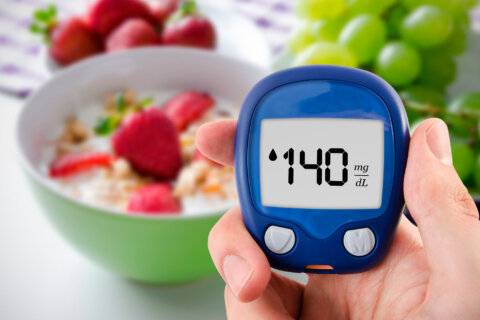It’s no surprise that good nutrition is essential not only for health, but also for fueling your muscles for physical activities like running. But what may come as a surprise even to runners is that when to eat is just as important as what to eat. In fact, the timing of your fueling and refueling may be even more important for putting your muscles in their optimal state of running readiness.
[See: Should You Count Calories or Track Macronutrients?]
To understand why, and eventually to be able to improve those longer runs, you first need some basic knowledge on energy and muscle fuel. We get our energy predominantly from foods containing carbohydrates and fats. Carbohydrates are the major source of glycogen, a form of glucose that is stored in the muscles and liver. Glycogen is the most important form of carbohydrate used by humans, and is an essential fuel source for the body during all forms of exercise. Runners must maximize and maintain adequate muscle glycogen since a properly-fueled muscle will perform at a higher intensity and for a longer duration before becoming fatigued, and is also less prone to injury, than a poorly-fueled muscle.
Even if you didn’t know those glycogen facts, I bet many of you have experienced those glycogen feelings. When your muscles feel great during or before a run, it’s a signal that their glycogen stores are high. When your muscles feel tired toward the end of a long run, it’s a sign that their glycogen stores are low. From a runner’s perspective, then, glycogen is gold! And anything you can do to get to the gold is important.
However, despite its gold status, muscle glycogen storage — unlike that of fat storage — is very limited. It’s only able to provide energy for, at most, 90 to 120 minutes of physical activity, depending on the person and his or her fitness level. Also, just eating more carbs isn’t enough. If you want to improve your running, and your recovery from running, you have to pay attention to the timing of what you eat. Research shows that doing so allows you to maximize muscle glycogen fueling before exercise, extend glycogen use during exercise and maximize muscle glycogen refueling after exercise. Here’s how:
Before Exercise
What and when you eat before exercise can make a big difference in your performance and recovery. First, make sure you are well-hydrated. Next, prepare for your workout by consuming 8 to 12 ounces of an easily-digestible carbohydrate and protein drink 10 to 15 minutes before you start your run. This will increase nutrient delivery to your muscles and spare muscle glycogen and protein. The ratio of carb to protein should be about 3-to-1.
During Exercise
For runs lasting longer than an hour, take small sips of a carbohydrate and protein drink every 20 minutes or so during your run. This strategy will spare your muscle glycogen, delay the onset of fatigue and enable you to run longer. Remember, these approaches are for longer runs of more than an hour at relatively high intensity — say, a pace of 8-minute miles or faster. If you are a recreational jogger who just likes to go out for up to 45 minutes at an easy pace, you probably don’t need to worry about fueling during exercise.
[See: 7 Signs You Should Stop Exercising Immediately.]
After Exercise
Refueling is where you can make the biggest gains. The secret of maximizing your glycogen stores is to start refueling early — very early. You will store twice the amount of glycogen when you consumer carbs, supplements that contain carbs and protein, or both immediately after exercise, compared to two hours afterward. As my old sports science mentor, a world-renowned researcher in endurance exercise physiology, used to tell me, “Start your refueling before you start your showering!” There are a range of commercially-available drinks and sports products that can provide easily-consumed carbohydrates, and you can add protein if you need to make up the optimal ratio.
[See: 5 Unintended Consequences of Eating Too Much Protein.]
For a more comprehensive guide to fueling for running, check out Table 1 on this recent International Position Statement on Nutrition and Dietetics. Meantime, read the labels, talk to a sports nutritionist or both. And keep eating that pasta, but pay attention to these proven strategies in order to maximize your muscle’s fuel for running.
More from U.S. News
8 Reasons Running Now Will Help You Later in Life
8 Signs You Are Made to Be an Athlete
Here’s How Many Calories 6 Summer Olympic Sports Burn
How to Improve Your Running Through Food originally appeared on usnews.com







